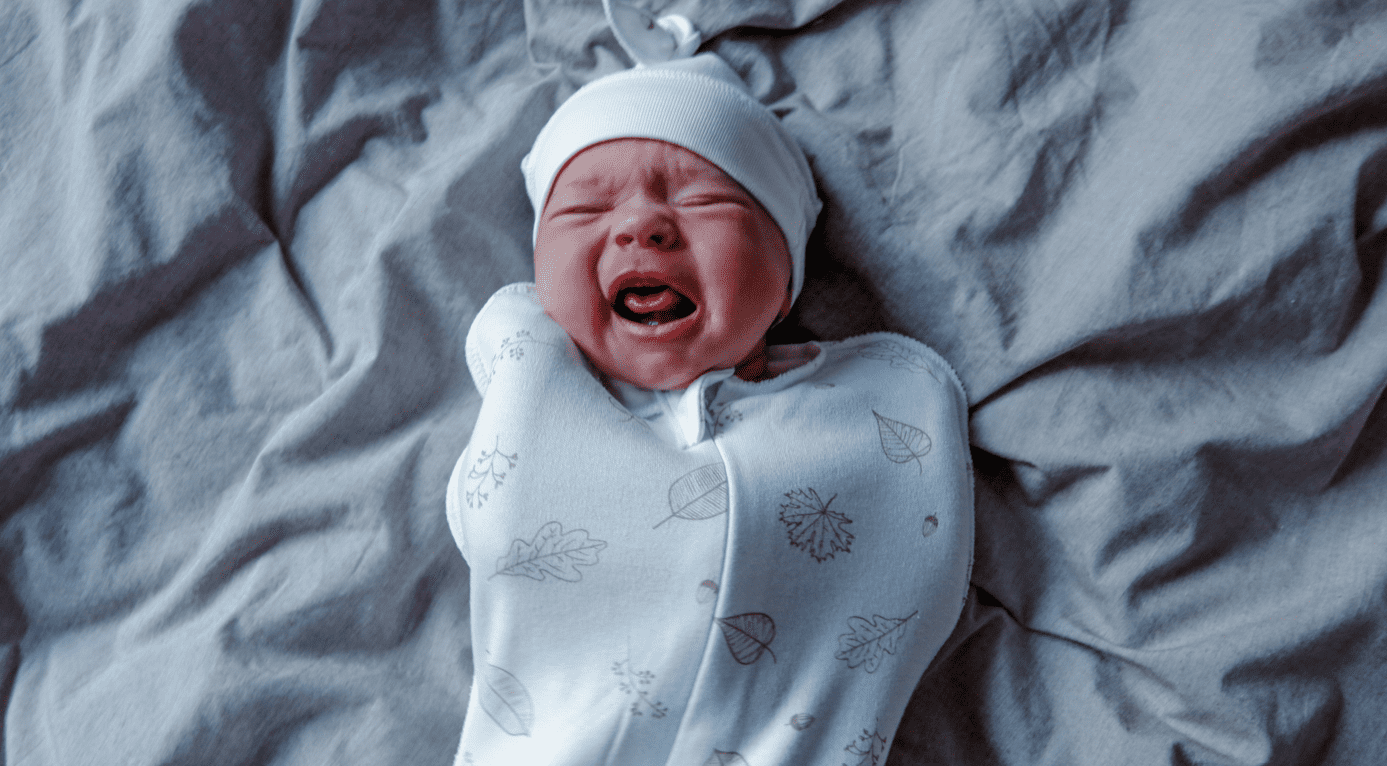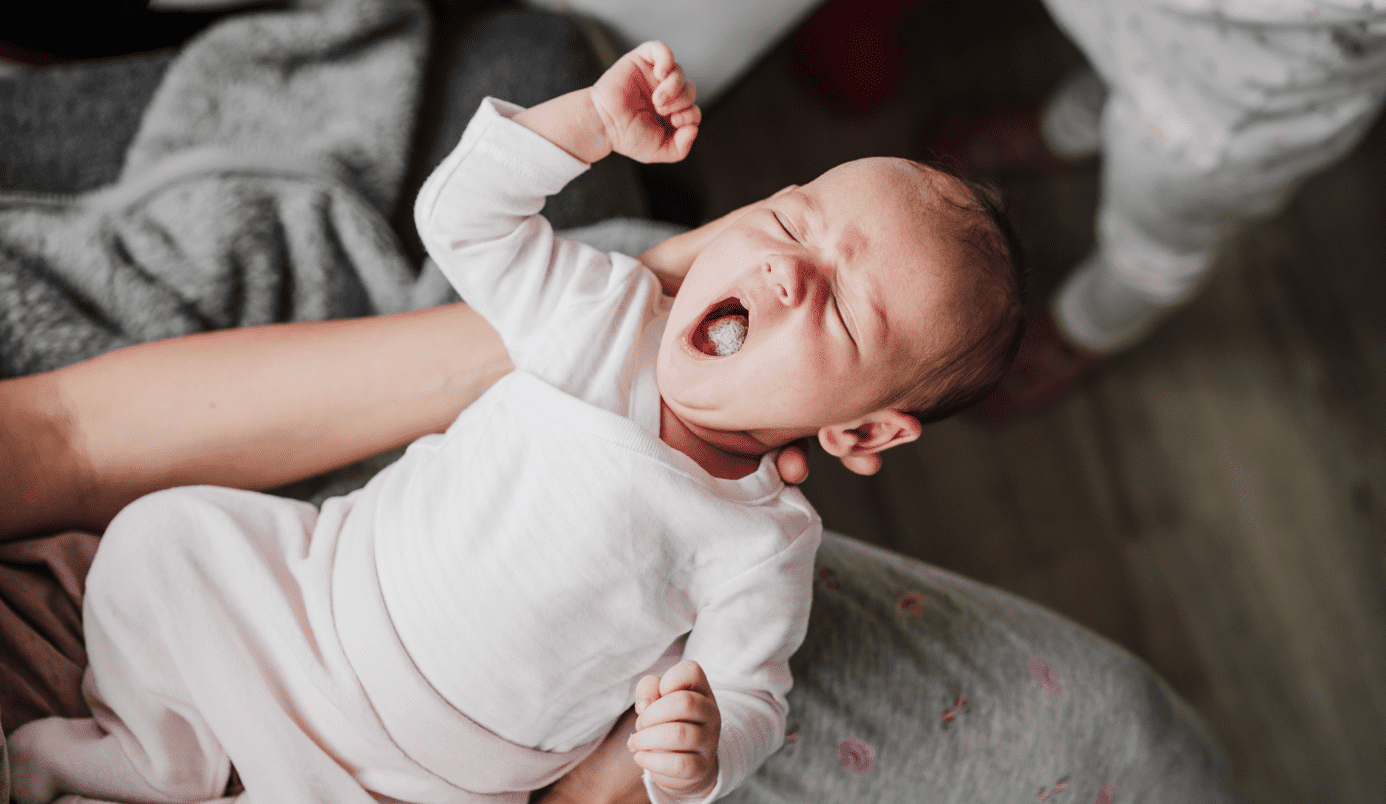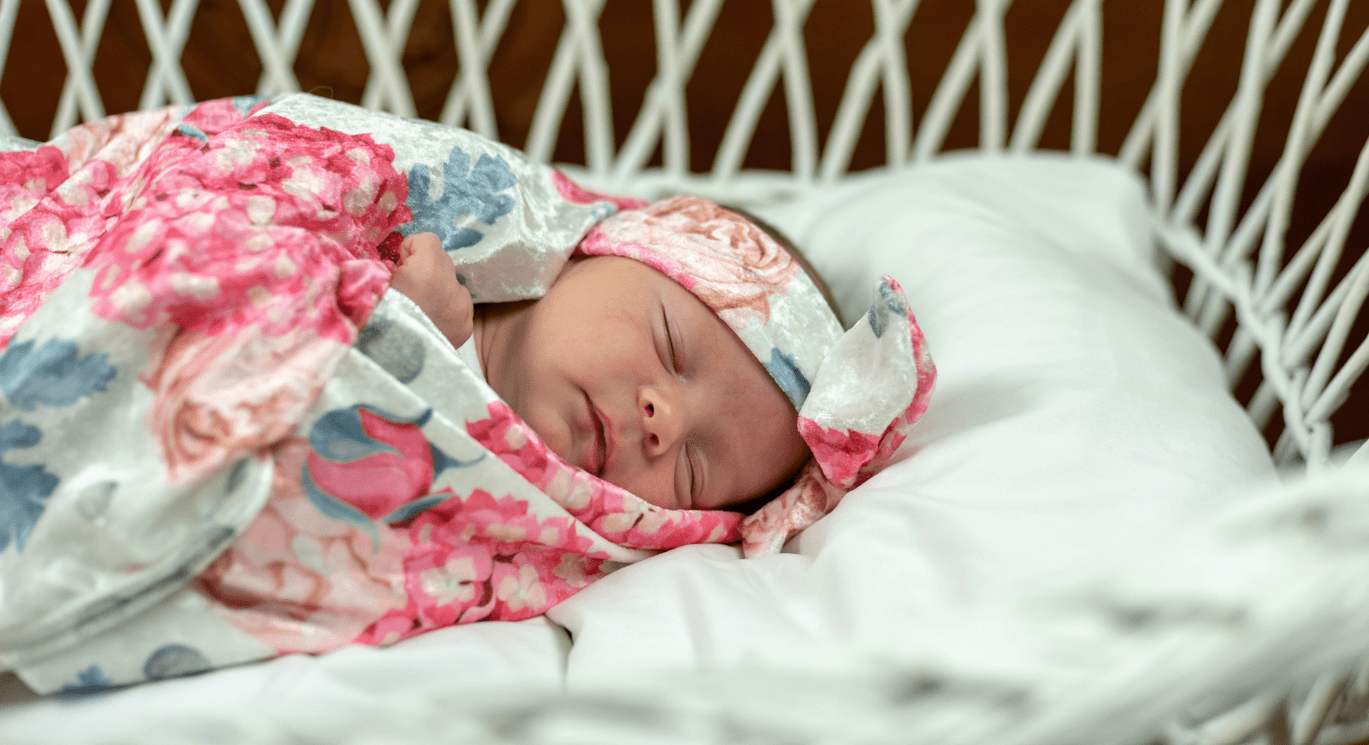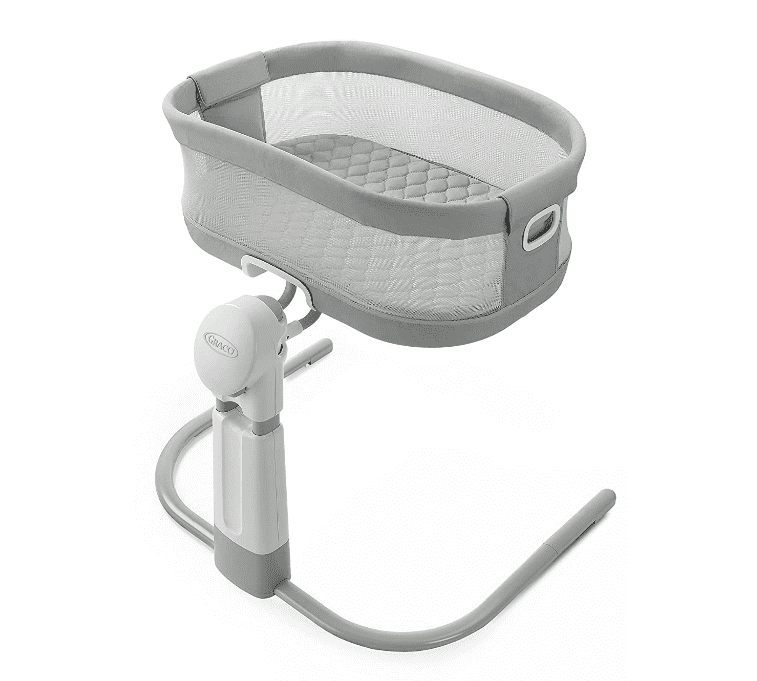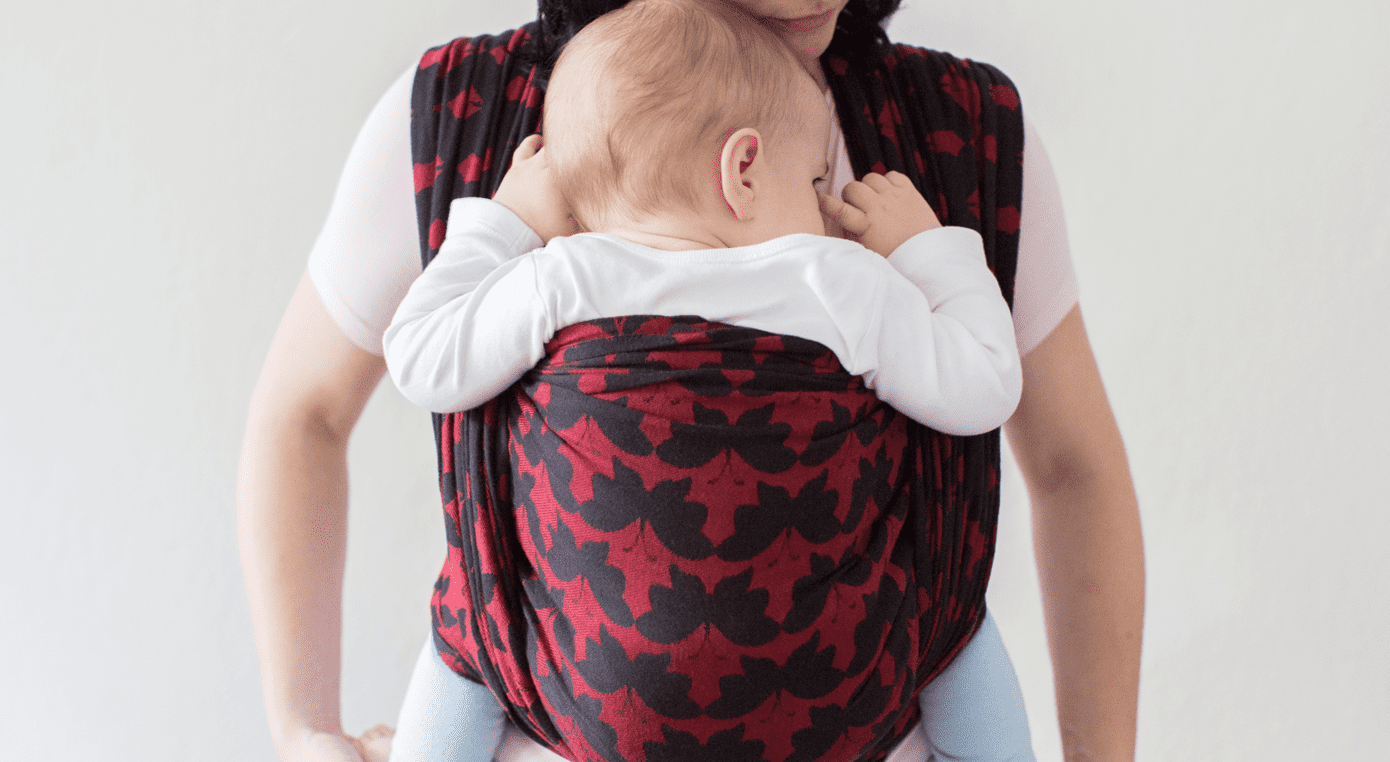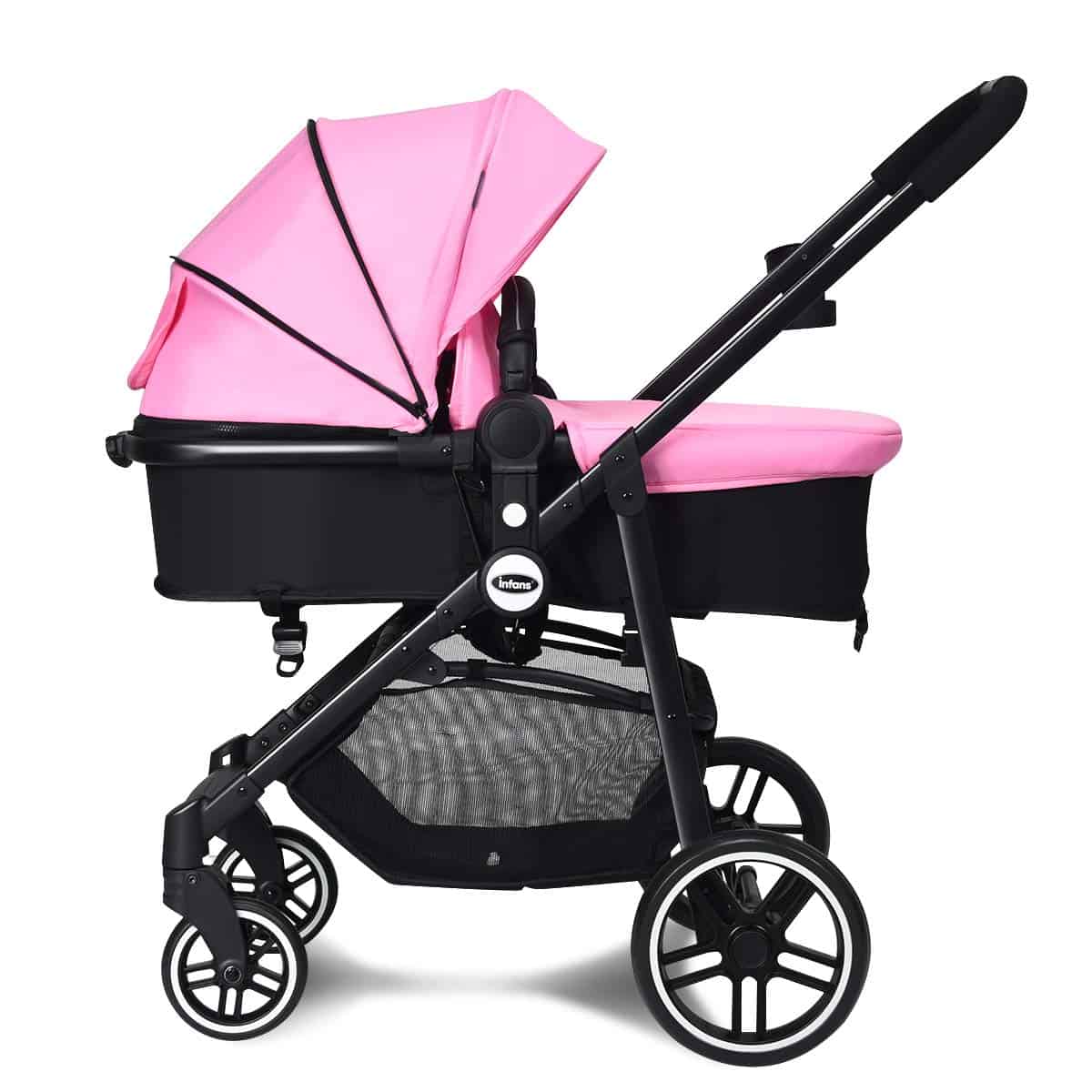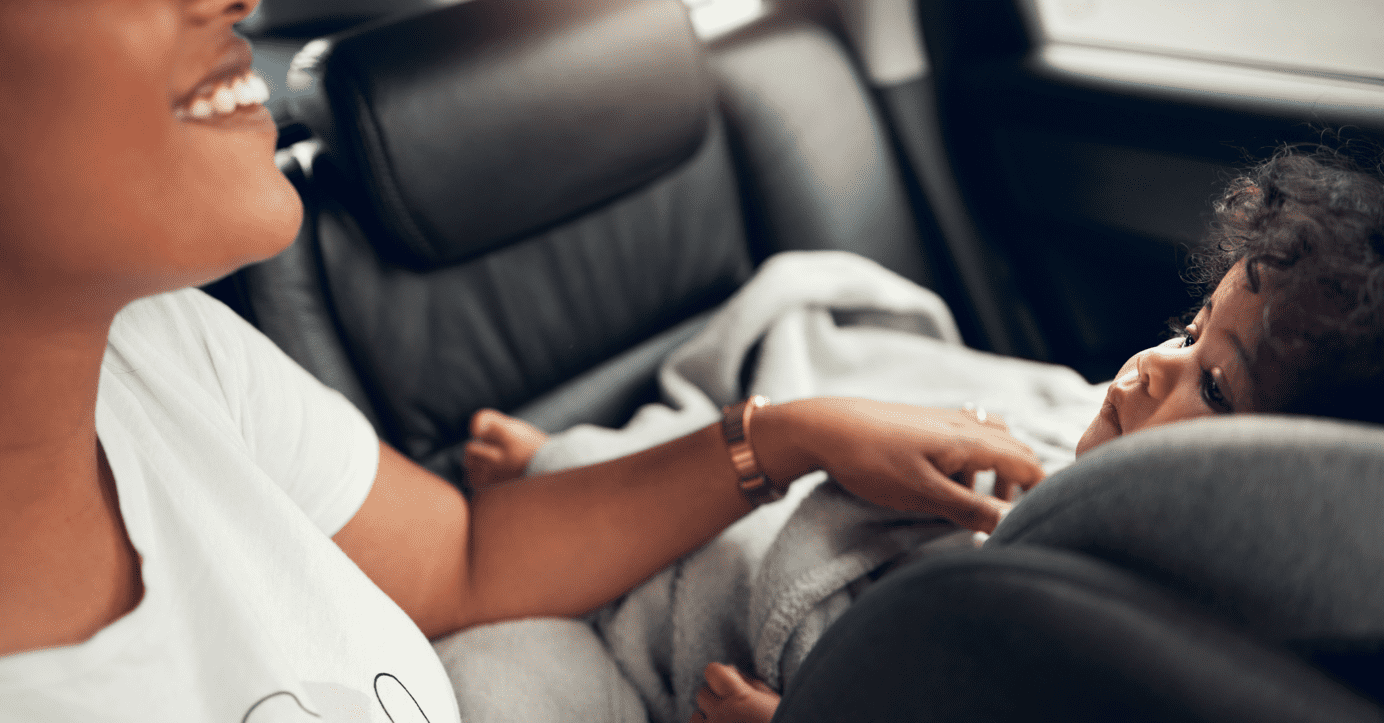So you’re excited about your new baby but exhausted from the birth process and around-the-clock feedings. You have all the baby stuff, and took the classes, but your newborn seems to hate their bassinet. If this is you, you’re not alone, I was there too and it’s more common than you think. You can skip all the confusing information on the internet.
What I have to tell you is everything you need to know about what you’re going through right now. Bottom line, it’s natural for your baby to struggle with bassinet sleep, but not all hope is lost, there are ways you can help get them to sleep either in or out of the bassinet.
Why Your Newborn Won’t Sleep in Bassinet?
When my daughter was first born, I would try rocking her and then putting her down in her bassinet when she was asleep and she would instantly wake up and start crying. I even tried putting her down when she was drowsy but awake, and still as soon as she felt the bassinet she would start screaming. This was a very long and frustrating journey for me as you can imagine.
The reason it happens stems from caveman days. Many infants learned that being put down and not being in the safety of an adult was a very dangerous situation. Think about it, a baby left in an open field was susceptible to predators, so over time, many infants have adopted the instinct to cry in situations like these.
So Why Try and use a Bassinet If your Infant Doesn’t Like One?
A bassinet will offer the safest sleep option for a newborn. As many new parents are aware these days, Sudden Infant Death Syndrome (SIDS) is very real and there are many ways to help reduce the likelihood of SIDS happening. One of the ways is to use an approved bassinet that has a firm surface with no other items in the bassinet.
The American Academy of Paediatrics puts out guidelines that all parents should follow to minimize the risks of SIDS, which is why things like bed sharing and sleep positioners are warned against. Soft surfaces, like a couch or adult mattress, as well as inclined surfaces, like an infant swing or bouncer, are deemed unsafe for sleep and have been linked to infant deaths. More info on safe sleep best practices here.
Beware of What You Read on The Internet
There are many tips and tricks out there on this topic because it is such a frustrating one but be warned of unsafe advice. Anything other than a fitted sheet and your baby in the bassinet is a safety hazard and should not be used for sleep. Things like using a heating pad to warm the surface or a glove full of rice, heated up to mimic the feel of your hand can be dangerous if left in the bassinet.
When using these types of tricks or hacks, you’ll need to be present and watch your baby the entire time. This isn’t practical for most exhausted newborn parents, which is why these tips can be very dangerous. The desire to sleep while the baby sleeps, or get things done around the house can be very strong so it’s best not to entertain these ideas.
Here’s What You Can Do to Encourage Safe Sleep Right Now
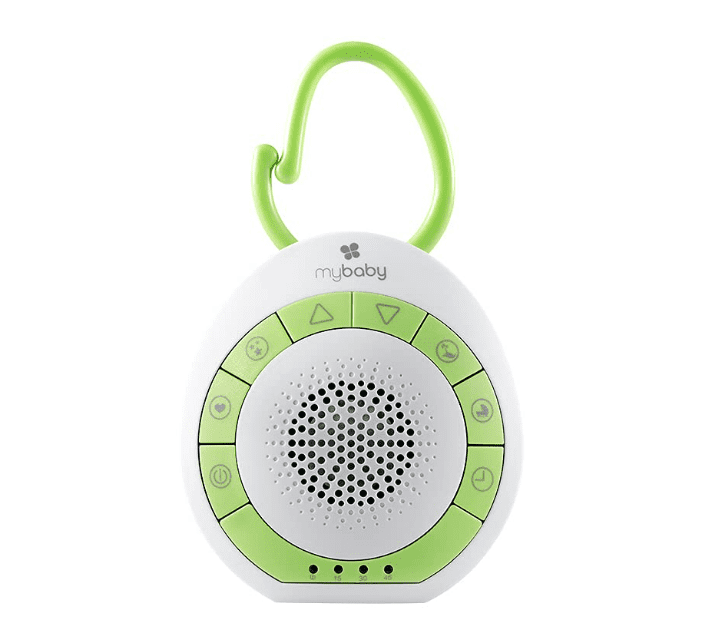
- Create the optimal environment for sleep: Good sleep starts with the right environment so check to make sure your newborn’s sleep environment is Cool, Dark, and uses White Noise.
- Cool: The optimal temperature for sleep is 19-20C / 68-70F. Ensure your newborn is not wearing too many layers as well. A diaper and a swaddle for example are perfect. Newborns cannot regulate their temperature and if overdressed they can overheat, which is a contributing factor to SIDS. If you’re worried your infant is too cold, place your 2 fingers on the back of their neck and if they are the same temperature as your hand then they are totally fine (even if their feet/hands/cheeks are cool)
- Dark: Keep the room pitch black. If you need to go in to feed, use a red or amber coloured night light. Red light doesn’t disrupt sleep the way that other colours do.
- White Noise: Use a white noise machine consistently for all day and night sleep. Ideally, your white noise machine produces natural non-looping white noise, not pre-recorded. Also, stay away from nature sounds or music as these do not provide the same effect as white noise. You can also use a fan or air purifier as your white noise generator. We want to aim for a maximum of 60db in the room so download a decibel meter to your smartphone and place it where your baby would be sleeping, then adjust the white noise volume accordingly.
So why is this the optimal sleep environment? First off, we want to re-create the safety and security of the womb as much as possible, which is a very dark environment with loud white noise. We also want to follow the gold standard of the environment in which humans sleep best. Stemming back from caveman days, where caves offered the best safety from the elements and predators, cool, dark, and quiet environments cue sleep in the form of melatonin production.
All those years of evolution and our bodies still respond best to a pitch-black room, that is cool and free of outside noise. This is why white noise has been proven to improve sleep for all ages because it helps the brain tune out distracting noises and focus on sleep.
My Pro-tips for Encouraging Bassinet Sleep
Timing Is Everything
The best tip I can give you for getting a newborn to sleep is being aware of their sleepy signs and wake windows. If you try and put your newborn to sleep past the appropriate time, then they will become overtired making sleep much more difficult. Contrary to the way adults work, more time awake does not equate to an easier time falling asleep.
The longer a newborn stays awake past their wake window, the more stress it puts on their body, which then produces the hormone Cortisol. This hormone helps to keep us awake and alert in order to get out of stressful situations. This is why an overtired infant will play, cry and protest sleep when they are overtired.
- Watch the clock: Newborns have a very short wake window, which is the time they can stay awake between sleep periods. A good rule of thumb is 45-60 minutes of awake time before the newborn (1-12 weeks old) must return to sleep. The younger the infant, the less time awake, etc.
- Look for sleepy signs: Common signs an infant is tired start with a glazed look, zoning out, and pulling their ears. Then signs shift to yawning, turning away from stimulating things or people, and the last stage is crying and arching the back. Don’t wait until the last stage to put your infant to bed because by that point they are already overtired and there will be a lot of fussing and crying as they try to fall asleep.
- Pro tip: use the two in combination. For example, once your newborn wakes up, set a timer, and if they show sleepy signs first then put them down earlier. If no sleepy signs appear before the timer goes, then put them down when the timer goes off. Some infants don’t always show clear sleepy signs or parents may miss the signs if they’re busy.
The Swaddle Is Your Best Friend
Think about it, your newborn not too long ago was in the womb, all tucked up and in a small confined space. We want to replicate that as much as possible with their new environment. That’s why swaddles are so key. They help your newborn feel safe and secure, and they also prevent wakings when the Moro reflex activates.
I suggest getting a few different types of swaddles to see which one your newborn prefers. Some love sleeping with their arms up, for example, so trying an arms up version if your newborn cries with the traditional options, can be a game changer.
Change The Way You Put Your Newborn “Down”
When you put your newborn into the bassinet, there are 2 options to try to get a better result. You can put them down feet first, or have them on their side. Either option requires a gentle slow rotation to the back as the final step because that is the safest position for sleep.
The problem is when an infant is put down on their back from a higher distance, it triggers the Moro reflex because this resembles a falling sensation that makes them very uncomfortable. It can cause the baby to wake up from sleep or cry.
When The Bassinet Just Doesn’t Work, All Is Not Lost!
Some babies just can’t feel safe enough to sleep in a bassinet and that is ok. Contrary to popular thought, it isn’t possible to spoil a newborn, so whatever works to help your baby to sleep, keep doing it, as long as it follows the AAP’s safe sleep guidelines. Here are some ideas you can try.
Motion Bassinets
There are a few options on the market that automatically provide swaying motion when an infant is fussing. These can be lifesavers for many parents, but I find that not all babies respond well to them.
The best chance of your newborn taking to one of these is to use it right from day 1. As newborns get older, the effects are no longer the same if you start using them at 8 weeks old for example.
Babywearing
Having your baby sleep in a carrier or wrap as you go about your day and run errands or tidy up the house, is a great way to have the best of both worlds. Your baby gets some much-needed sleep and you get to do the things on your to-do list.
In my daughter’s newborn days, this was sometimes the only way to get her to go to sleep! At night babywearing could be an option to try if nothing else is working. Take shifts with your partner and walk around the house, or sit in a rocking chair.
A Stroller
The stroller is another good option when things aren’t working, especially if you have a bassinet option. Taking a nice long walk around the neighborhood or even pushing the stroller back and forth in your child’s room can do the trick. The key is to ensure your baby isn’t sleeping on an unsafe incline which is why the bassinet attachment is the best option for stroller sleep.
The Car
And then sometimes you have to resort to driving your newborn around in a car to get them to go to sleep. This really should be a last-ditch attempt and you’ll need to keep a close eye on your newborn as car seat sleep isn’t necessarily the safest sleep.
The slight incline could result in your child’s airway collapsing under the weight of their head if not properly buckled in or monitored by an adult. Short bouts of sleep may be ok but longer ones should definitely be avoided.
FAQs
Question: What should a newborn wear to sleep?
Answer: It depends on the room temperature. If the room is optimal at 19-20C / 68-70F then a cotton swaddle should be enough. If it is cooler, then a long sleeve sleeper under the swaddle will be helpful. If it is warmer, try using a fan to circulate the air in the room. Hats are not necessary and are actually unsafe for sleep as they can be a suffocation issue.
Question: Does a newborn need a bedtime routine?
Answer: All humans love routine, especially infants. It helps them feel safe because it gives them a sense of expectations and control over their environment. Although a routine will not put your newborn to sleep, it is a good habit to get into because over time it will become a cue for sleep. When your newborn associates the routine with sleep, it can help ease them into the transition.
Question: Should I use a pacifier for my newborn?
Answer: Pacifiers have been linked to a reduction in the risk of SIDS so they can be very helpful in the first 6 months of life. They activate the calming reflex that infants are born with, helping to soothe them to sleep. Just ensure pacifier use is discontinued at 6 months (12 months at the most) in order to ensure the jaw and palette develop properly.
Question: Can I sleep train a newborn?
Answer: It is not advised to sleep train until a child is 16 weeks old. There are many factors at play for this timeline, but two main reasons are Circadian Rhythm development and the ability to self-soothe. Once an infant is 16 weeks old (post Expected Due Date), their Circadian Rhythm has formed making sleep training and adapting to a sleep schedule easier. The ability to self-soothe has also matured so the process will be much more successful at this stage.
Conclusion
Newborns develop at a very fast pace where week by week things are changing but rest assured that nothing will ever stay the same. If something isn’t working today keep trying it because as your newborn changes some things that didn’t work before may work now. Once your infant reaches 16 weeks old they are in a great place to transition to independent sleep.
That’s my favourite time to work with families because the transition is the quickest at this point. Working on independent sleep skills before the four-month sleep regression comes is my biggest pro-tip and one that will serve you well for many years to come. Because falling asleep without help is a true life skill.
Alison Macklin is a Toronto-based Child Sleep Consultant certified by the Family Sleep Institute, which is one of the most extensive professional certification programs available. She studied Psychology and Sociology at the University of Toronto and took an interest in child development, but her passion for the world of sleep began when she became a mom. Her daughter wasn’t born a naturally great sleeper and became increasingly difficult to put down, which lead to less sleep and more crying. Exhausted and at her wit’s end, Alison and her husband sought out the help of a knowledgeable sleep consultant and it was a life-changing experience. Her daughter went from being chronically overtired to falling asleep independently in her own room and sleeping through the night. Since then, she has been hooked on learning everything there is to know about pediatric sleep. Her mission is to help as many families as possible through what she knows can be one of the most difficult periods in life, all while feeling comfortable and confident about their child’s well-being and future development.
